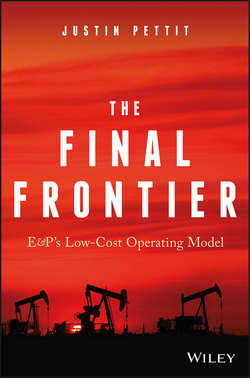Читать книгу The Final Frontier: E&P's Low-Cost Operating Model - Pettit Justin - Страница 9
На сайте Литреса книга снята с продажи.
CHAPTER 1
Introduction
INDUSTRY EVOLUTION
ОглавлениеOver the past century, the oil and gas industry has experienced a significant evolution in terms of our understanding of the underlying global resource base, the methods and technologies involved in its development, and the nature of its ownership and principal stakeholders. In conjunction with this change, there has been considerable evolution in business models – but so far, the accommodations made to enterprise internal operating models have been largely incremental (see Figure 1.2).
Figure 1.2 Upstream Evolution
Source: IHS Energy
What began in the early days of the twentieth century as a largely entrepreneurial effort quickly evolved into big business, in part due to the scale of its requirements, in terms of capital and expertise – in the 1960s, oil supply was safe and abundant and not a constraint on economic growth, with excess capacity exceeding demand by about 20 percent of the free world's consumption.8 This fueled the corporatization and professionalization of the industry and facilitated tremendous growth in functional expertise, especially geological and geophysical roles, engineering, and other technical functions. The growth era of 1972–1981 drove large‐scale expansion. While the 1980s were characterized by low prices, layoffs, and consolidation, they also gave rise to innovations in 3D seismic, commercial beginnings for both horizontal and logging while drilling, and many new technologies and service companies.9
While the breadth and depth of technical capabilities flourished, so, too, did the opportunity for specialized field services companies to provide such expertise on an intermittent or as‐needed basis. Similarly, business model adaptations such as nonoperated ventures (NOVs) and joint ventures (JVs) enabled companies to participate in resource development and production activities beyond the reach of their core ownership holdings or core capabilities. These vehicles also facilitated a pooling of financial capital and technical expertise, which were often in short supply, while also syndicating the project risk – which was often considerable.
As oil and gas became big business, many host countries recognized the opportunity to retain a greater share of their resource sector's bounty and control through the adoption of state‐led national oil companies (NOCs) – another variation in the sector's business models. Consolidation among the largest integrated players (mega‐mergers) facilitated consolidation – affording large economic gains in the downstream refining and retail segments of the industry and a consolidation of conventional upstream business. Many companies adopted corporate shared services models for centralized procurement and other business roles.
Consolidation of the world's lowest‐cost conventional resources under NOCs and state ownership caused international oil companies (IOCs) and independent operators to venture further afield into new international frontiers and a growing array of resource types – including ultra‐deep‐water, the arctic, shale gas, tight oil, and the Canadian oil sands. These ventures generally represent much higher cost resources and require even more specialized expertise.
In the aftermath of the collapse in oil and gas prices, efforts to offset the effects of cost inflation and capital constraints have included the sale of many midstream and downstream assets, with many upstream operators exiting these parts of the value chain to focus their efforts (and limited resources) on the needs and opportunities of the upstream. Within the enterprise, this has generally included a migration toward asset team organizations, and investments in key capabilities such as enhanced subsurface capabilities, with improved data processing for 3D seismic, greater use of geomechanical modeling and reservoir engineering, enhanced recovery (EOR), and new applications for digital and big data analytics.
Despite this evolution – our understanding of the resource base, methods and technologies for its development, ownership and stakeholders, business models – there has been little effort to redesign and transform enterprise operating models beyond incremental accommodations. Unlike industries that have undertaken operating model transformations in response to disruptive industry forces (e.g., retail), the upstream rarely undertakes operating model change on a systematic or enterprisewide basis. The notable exception is post‐merger integration (PMI) programs, where promises of synergies often trigger fundamental reviews of operating models.
8
Daniel Yergin, The Prize: The Epic Quest for Oil, Money, and Power (New York: Simon & Schuster, 1990).
9
Robert Peebler, “We Are at an Inflection Point in E&P Services/Technology,” LinkedIn (July 2016).
